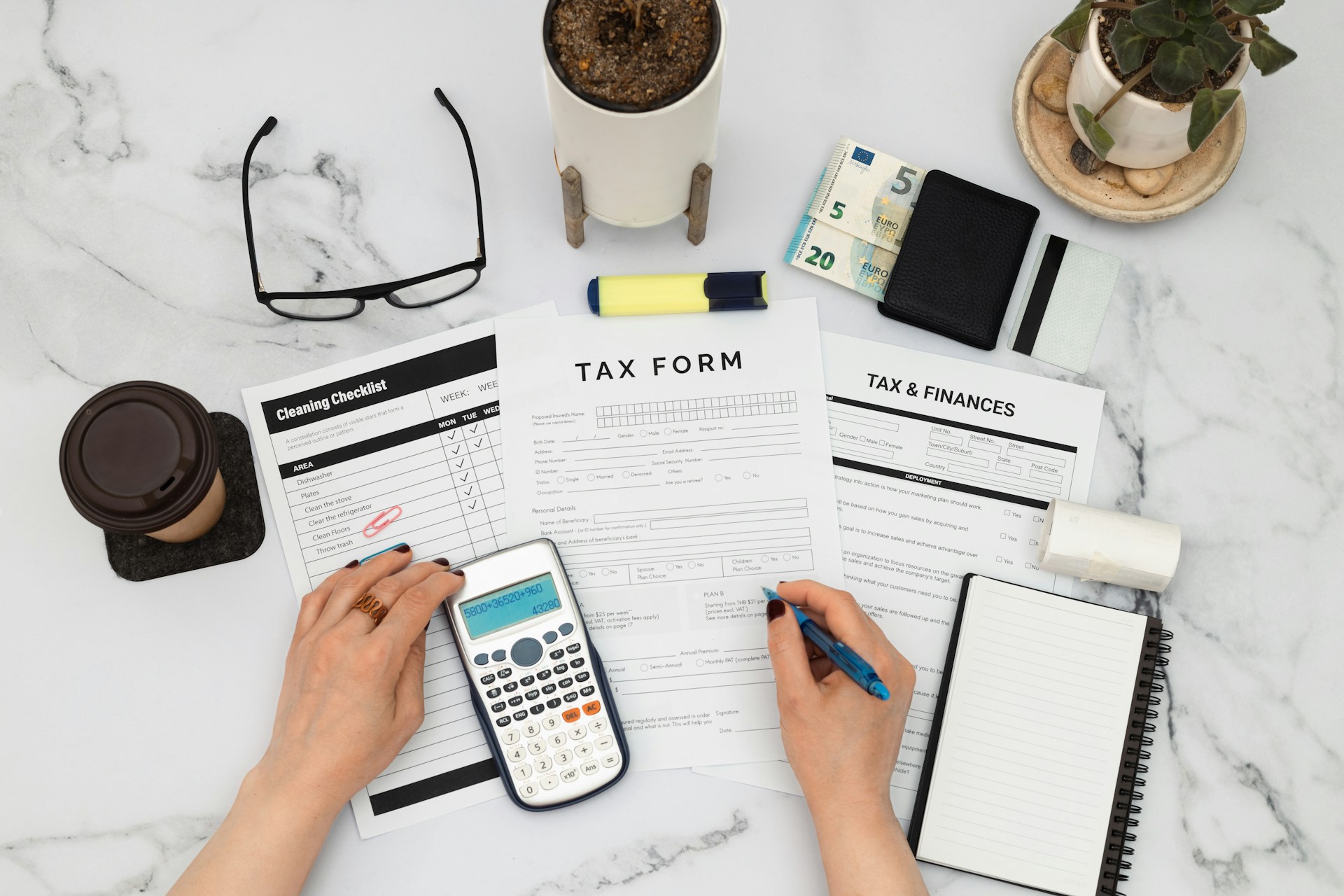When you’re self-employed, tax time often brings more questions than answers. One of the most confusing parts of managing your own income is figuring out estimated tax payments. Unlike employees who have taxes taken out of their paychecks, you’re on your own when it comes to paying the IRS. That means staying on top of what you owe and when can make a big difference in avoiding unexpected bills and penalties.
October is a good time to revisit your payments as the year winds down. With only one more quarter left, it’s a smart move to double-check what you’ve already paid and estimate what’s still due. If you’re living and working in North Carolina and earning income outside of a traditional paycheck, understanding this process will help you keep things in order and avoid last-minute problems.
Understanding Estimated Tax Payments
Estimated taxes are what you pay directly to the IRS four times a year if you earn money that isn’t subject to automatic withholding. This usually applies to people who are self-employed, freelancers, or those who collect rental income, royalties, or similar non-salaried earnings. Since no one is withholding taxes from your paycheck, it’s your job to send in a portion of your income regularly throughout the year.
The goal is to pay as you go. Otherwise, you could end up with a large bill at the end of the year along with possible penalties for underpaying. Estimated payments cover not just your income tax, but also self-employment tax, which includes Social Security and Medicare costs.
Let’s say you run a small landscaping business. You earn steady income from April through October, with a few jobs during the winter. Since you don’t receive a traditional paycheck, the IRS expects you to figure out roughly how much you’ll owe and send it in incrementally. That way, your taxes are paid gradually as you earn money rather than all at once in April.
These payments are based on what you expect to earn for the whole year, but they can be adjusted if your income changes. If you don’t send enough money during the year, the IRS can charge you interest and penalties for underpayment. If you pay too much, you’ll likely get a refund when you file.
Who Needs To Pay Estimated Taxes?
Estimated tax payments usually apply to individuals who expect to owe $1,000 or more in taxes when they file. If you’re self-employed in North Carolina and don’t have taxes withheld through other forms of income, you’re probably on the hook for quarterly payments.
Here are a few examples of who may need to pay:
- Sole proprietors, freelancers, and independent contractors
- Small business owners who don’t withhold taxes from their own pay
- Individuals earning income from rental properties, royalties, or investments
- Gig workers and part-time earners without regular employer tax withholding
If you receive income from different sources, make sure to consider all of them when calculating your estimated taxes. Even if some of your income has withholding, you might still owe quarterly payments if it’s not enough to cover your total tax bill.
It’s also important to look at previous years. If you owed taxes last year and expect similar income this year, chances are you should be making estimated payments now. Many taxpayers forget this step after their first year of business or freelance work, which can result in a bill larger than expected come tax time. Each year stands alone, so if your income has changed, your payment expectations might have too.
How To Calculate Estimated Tax Payments
Getting your estimated taxes right starts by understanding how much income you expect to make for the full year. You’ll also need to know what deductions you can take and how much you’ve already paid in other taxes, like if you have a part-time job with withholdings. It’s not exact, but the goal is to be close enough to avoid penalties or a surprise payment next spring.
Here’s a quick rundown of what you’ll need to figure it out:
- Add up all your expected income from self-employment and any other jobs
- Subtract your business expenses to find your net earnings
- Apply income tax rates to your total adjusted income
- Calculate self-employment tax, which includes Social Security and Medicare
- Look at any credits or withholdings you already have, and subtract those
- Divide the amount you owe into four equal payments across the year
Some people use prior year tax returns as a guide to predict current year earnings. If your income stays steady, this might work well. But if your income goes up or down, you may need to adjust each quarter. For example, if you earn most of your profits in spring and summer, your first two payments should be larger than the ones you make at the end of the year.
Tax software, spreadsheets, or worksheets from the IRS can help you run these calculations, but they still require good financial records. You’ll need to know your income and deductible expenses month by month to plug in accurate numbers. If you estimate too low, you might owe more later. If you estimate too high, you’ll end up giving the IRS more than needed upfront.
Quarterly Deadlines And How To Pay
Estimated taxes don’t follow the usual monthly calendar. They’re due four times per year on a unique schedule, not every three months. These quarterly deadlines often catch people off guard, especially new business owners who expect a different timeline.
Here’s when estimated tax payments are due each year:
- April 15 – covers income earned in January through March
- June 15 – covers income earned in April and May
- September 15 – covers income earned in June through August
- January 15 (of the next year) – covers income earned in September through December
If the due date falls on a weekend or legal holiday, it’s pushed to the next business day.
To pay, you’ve got options. The IRS allows payment online through its website, which is usually the quickest and easiest. You can also set up electronic payments by debit or credit card or schedule automatic deductions from your bank account. If you prefer mailing a check, that’s still allowed too. Just make sure it reaches the IRS on time.
Some people like to make smaller monthly payments instead of one big chunk, which can help with personal budgeting. As long as you pay enough by each quarterly deadline, the frequency doesn’t matter. What matters is that the right amount ends up paid before the cutoff.
What Happens If You Miss A Payment?
Missing an estimated tax payment may feel like a small mistake, but it can add up quickly. When you don’t pay enough or fall behind, the IRS may charge interest and penalties based on how late or short the payment was. These charges stick, even if you’re only off by a little.
Here are a few things that can trigger penalties:
- Paying after the quarterly deadline
- Underpaying across any quarter
- Not paying the total you owe by the end of the tax year
If you forget a payment, don’t panic. Make the payment as soon as possible, even if it’s late. Catching up can reduce the penalty or stop it from increasing further. Document what you paid and when to keep your records clear.
Some taxpayers qualify for a small penalty waiver if they were recently unemployed, had a major life change, or a disaster hit their area. But you usually have to apply for that waiver when filing your annual return. It’s not automatic.
To avoid surprises next year, review your earnings each quarter. If your income shifts a lot, adjust your future payments based on what you’ve actually made, not just what you guessed in January. Tracking as you go helps prevent bigger problems when tax season rolls around.
Why Getting Help Can Save You Time And Trouble
Handling estimated taxes might sound easy on paper, but in real life, it can quickly become stressful. The math has to be close, deadlines are strict, and the forms can be a lot. If you miss a step, the IRS isn’t shy about letting you know.
That’s why hiring someone to manage it for you often makes sense. A tax professional can look at your income and walk you through exactly what you owe. They know how to factor in changes during the year, like switching clients, growing your business, or hitting a surprise dry spell. They’ll also keep you up to date on changes in tax laws or deadlines that apply to your situation.
More importantly, you’ll have someone to remind you when to pay and how much. No more digging through forms or running back over old spreadsheets. When you work with a trained expert, your taxes don’t fall through the cracks. You get peace of mind and more time to focus on your actual work.
Plus, if you’re already behind or unsure whether you missed a payment, it’s better to talk to someone who can help fix the situation rather than guess your way through it. That kind of help can make a big difference down the line.
Keep Your Finances Smooth All Year Long
The best way to stay ahead of estimated tax payments is to build good habits early. Don’t wait until the year’s almost done to figure out what you owe. Small steps each month can make tax season feel a whole lot easier.
Here are some tips to help you stay organized:
- Set aside a percentage of every paycheck for taxes right away
- Track your income and expenses regularly with simple software or a spreadsheet
- Review your numbers each quarter and adjust upcoming payments if needed
- Set calendar reminders for each quarterly deadline
- Keep digital or paper copies of all receipts and proof of payment
Being self-employed gives you flexibility, but it also comes with more responsibility. Taxes don’t go away just because you’re working on your own terms. When you stay prepared and check in throughout the year, you can avoid last-minute surprises, skipped payments, or big bills you didn’t see coming.
Managing taxes might never feel fun, but it doesn’t have to be unpredictable. Take control by planning ahead, keeping records clean, and asking for help when life gets too busy. That kind of planning makes running your own business in North Carolina a whole lot smoother.
As you navigate the complexities of self-employment and tax obligations, consider easing the burden by exploring our personal tax preparation services. Speedy Tax Preparation & Bookkeeping Service can help you streamline the process, keep your records accurate, and ensure compliance all year round. We’ll help you manage your taxes efficiently so you can focus more on growing your business.




